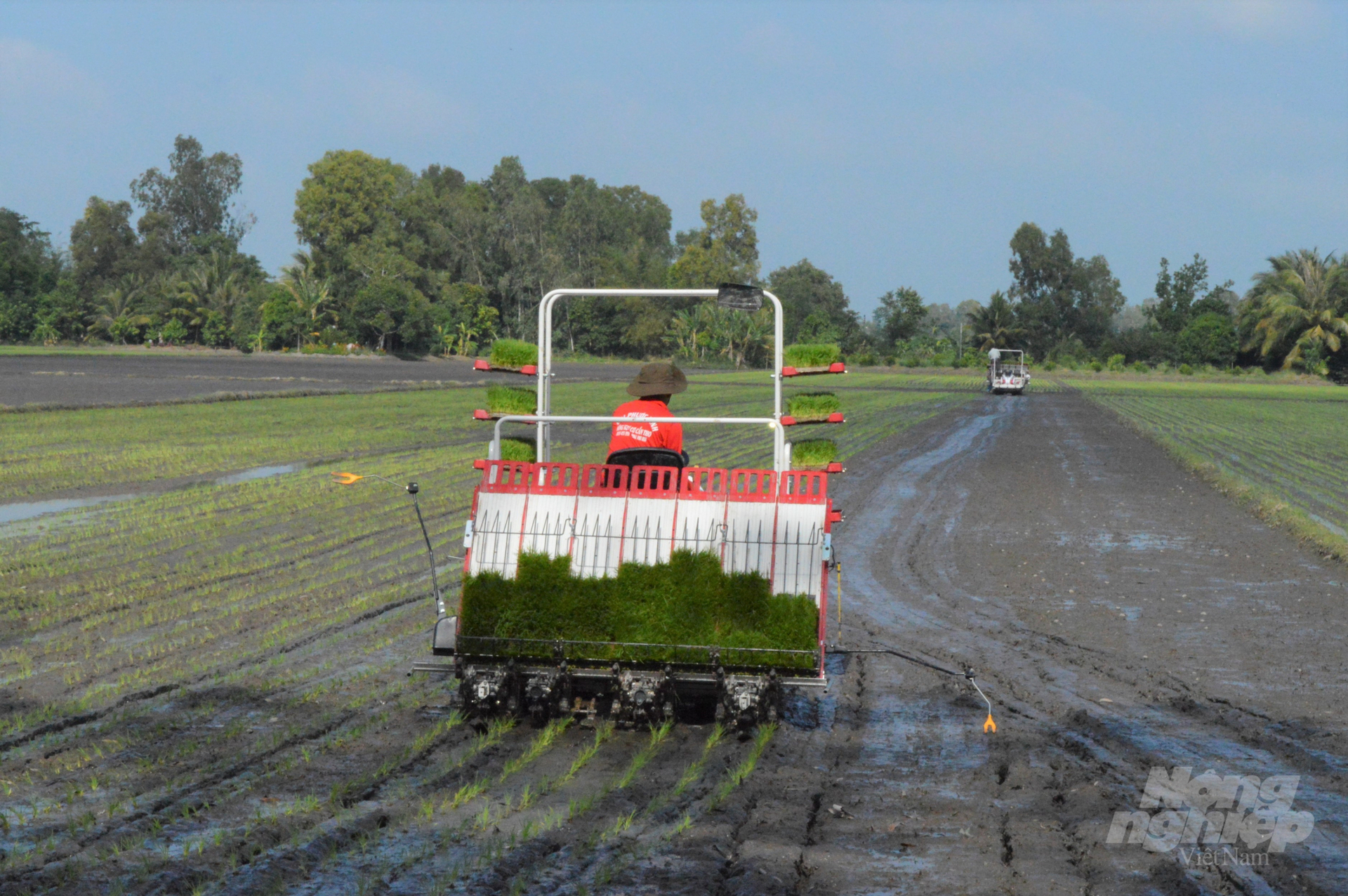May 21, 2025 | 07:57 GMT +7
May 21, 2025 | 07:57 GMT +7
Hotline: 0913.378.918
May 21, 2025 | 07:57 GMT +7
Hotline: 0913.378.918

Fuel demand in agricultural services is constantly increasing. Photo: VAN.
Biofuels have been holding the dominant industrial use for agricultural commodities in recent years. Grains and sugar crops are used in production activities but also processed into other products such as molasses and vegetable oils.
Biofuel demand is largely determined by the demand for transported fuel and domestic policy support. Over the next decade, the global use of biofuels is expected to continue to expand significantly, driven primarily by additional demand in middle-income countries, which is supported by domestic production subsidies and mixed fuel use. Substantial increases in biodiesel production in the USA are due to increased targets and adoption of state and federal renewable fuel programs as well as biomass-based diesel tax credits, so the demand will continue to increase.
In high-income countries, notably the EU, growth in the use of biofuel will be constrained by reduced demand for transport fuels and reduced incentives. The EU’s Renewable Energy Directive has classified biodiesel made from palm oil as “high risk”. As a result, the use of palm oil-based biodiesel is expected to decrease, thereby slightly reducing the total use of biodiesel in the EU. However, the share of biodiesel in total diesel use is expected to increase over the next decade.
Transport fuel consumption is expected to expand in Brazil, Argentina, Colombia and Paraguay in the future, with ethanol and biodiesel use expected to increase respectively. Indonesia's diesel use is set to increase and the mixability ratio remains above 30%.
In South and Southeast Asia, biodiesel is expected to become more popular due to the increase in demand for transport and industrial fuels. As for India, sugarcane ethanol is predicted to contribute significantly to the target of achieving an ethanol blending ratio of 16% by 2025.
Agricultural commodities are also used as inputs for other industrial applications, including in the materials industry (plastics, clothing, paints), biochemistry and biopharmaceuticals. On the other hand, industrial application of agricultural commodities for commercial production, such as cereals for starch production, has become increasingly important in recent years and is expected to be the main source of inputs.
The medium-term projections presented in the Agricultural Outlook 2023 - 2032 assume a rapid recovery from inflationary pressures, no changes to existing policies, and developments following the trends of consumer preferences over the next decade.

The demand for food is increasing due to political instability and global economic crisis. Photo: VAN.
Apart from conflicts and geopolitical tensions, currently the most serious threat to the consumption of agricultural commodities, particularly food consumption, is posed by the consequential adverse economic effects of persistently high inflation and a potential global recession.
Considering the current context, the global reference price in real terms is expected to decline slightly over the next decade; but consumer prices may spike in response to intense economic, political or environmental events. There are many additional factors along the food value chain that contribute to food price inflation, including market strength in the processing and retail sectors.
Income and food price shocks, especially in countries with high food expenditure rates, also pose an additional threat, not to mention the risk of further outbreaks of disease that could affect human health or agricultural commodity production in general.
Environmental, health and welfare concerns may increasingly influence consumer choices and drive growing demand for items with higher value, such as poultry, fish, fruits, vegetables, nuts and seeds, as well as alternatives such as plant-based milk, gluten-free foods, and vegan meat substitutes.
Demand for certified foods as well as vegan alternatives, often advertised as more nutritious and eco-friendly, is expected to increase. For example, while increased consumption of fruits and vegetables may seem desirable from the perspective of health facilities, the frequent use of agrochemicals and water in cultivation as well as high emissions rate from cold chain and transportation may not seem desirable from an environmental perspective.
Translated by Samuel Pham

(VAN) Japan's grant aid project contributes to capacity building, promoting organic agricultural production, and fostering sustainable community development in Dong Thap province.

(VAN) For years, the CRISPR-Cas9 genome technology has been reshaping genetic engineering, a precision tool to transform everything from agriculture to medicine.

(VAN) Vietnam aims to become a 'leader' in the region in the capacity and managing effectively soil health and crop nutrition.
![Reducing emissions from rice fields: [Part 1] Farming clean rice together](https://t.ex-cdn.com/nongnghiepmoitruong.vn/608w/files/news/2025/05/05/z6509661417740_a647202949c539012a959e841c03e1d3-nongnghiep-143611.jpg)
(VAN) Growing clean rice helps reduce environmental pollution while increasing income, allowing farmers to feel secure in production and remain committed to their fields for the long term.
/2025/05/19/5136-1-144800_230.jpg)
(VAN) The Nghe An Provincial People's Committee has just approved the list of beneficiaries eligible for revenue from the Emission Reductions Payment Agreement (ERPA) in the North Central region for the year 2025.

(VAN) 14 out of 35 domesticated elephants in Dak Lak province have had their living conditions improved, with 11 of them currently participating in the non-riding elephant tourism model.

(VAN) Muong Nhe Nature Reserve hopes that being upgraded to a national park will lay the foundation for forest protection efforts to be carried out in a systematic, modern, and sustainable manner.